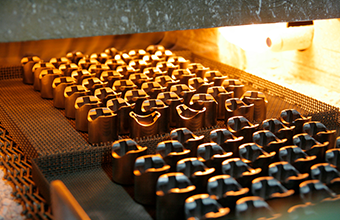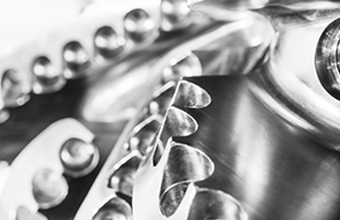There are many ways to produce metal components, including die casting, lost wax casting, forging, machine processing, and metal press processing. Powder metallurgy is another way of producing metal components. In powder metallurgy, metal powder is packed into a mold and sintered at a high temperature, thus enabling the mass production of high-precision components. In comparison to other techniques, powder metallurgy is superior in terms of the following aspects.
1. Economical production of high-precision components
The basic process is simple; metal powder is packed and then heated.
The material yield is good thanks to the fact that the base materials are powders, thus making it an environmentally friendly method of production.
High-precision molds mean that near net shape production is possible for relatively complex shapes, which in turn means not much post-processing (such as machining) is required for this method of production.
Complex 3D shapes that it has conventionally not been possible to produce using powder metallurgy can be manufactured using a new technology called metal injection molding (or “MIM”).

At Paide...
We undertake mass production of high-precision ultra-compact products with a manufacturing capability that incorporates all process from mold design onward.
2. Products that are impossible with other methods can now be produced
Production using molybdenum, tungsten, and other metals with high melting points is possible.
It is possible to produce materials with any ratio of metal and nonmetal.
Combinations of metals that do not melt into each other are possible.It is possible to make porous products.
Sintered oil-impregnated bearings make use of these characteristics and are impregnated with lubricating oil.

At Paide...
On the basis of our nearly 20 years devotion to powder metallurgy, we can select the best material for the way our customers intend to use a product, and ensure the product meets our customers’ needs.
We chat
